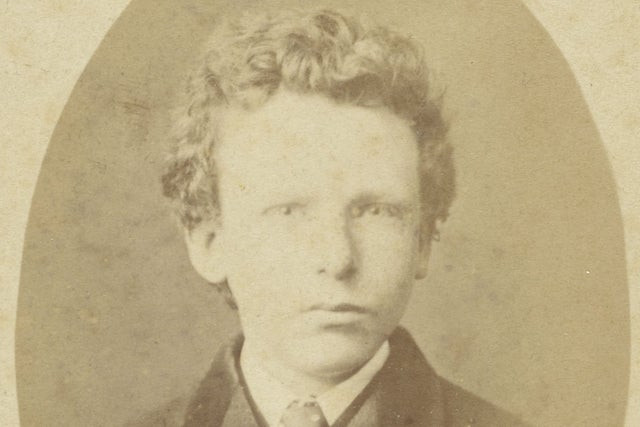The Van Gogh Museum in Amsterdam on Thursday revealed the results of research into a photograph that has appeared in countless books and catalogues, always billed as the earliest known photograph of Van Gogh.
The revelation means that now the only known photograph of the artist is one taken when he was 19.
The museum released the photograph of the newly identified teenage boy alongside one of Theo aged 32. The striking similarity of the piercing light-blue eyes was one indication that art experts had, for decades, got the wrong brother.
Willem van Gogh, the great-grandson of Theo and an adviser to the museum’s board, said he was surprised, but pleased the mystery had been solved.
“It is essential that Vincent van Gogh’s legacy is correctly passed on and preserved and this research makes a significant contribution to such efforts,” he said.
The photograph of “a 13-year-old Vincent” was first made public in 1957 at an exhibition organised by Mark Edo Tralbaut, a Belgian Van Gogh researcher.
The image was used around the world. “The question of whether it could be someone else never came up,” said Teio Meedendorp, a senior researcher at the Van Gogh Museum. “There was never any immediate cause for doubt, precisely also because the boy in this photograph bears similarities to the portrait of the 19-year-old Vincent.”
Vincent van Gogh, aged 19. Photo credit: Vincent van Gogh Foundation
That certainty was questioned in 2014 in a Dutch television programme which used experimental technology to suggest that they could be two different people. The museum began its own research and concluded the 19-year-old was definitely Vincent.
Independently, the writer Yves Vasseur had begun to doubt the identification of the younger portrait after discovering, by chance, that the photographer who took it, Balduin Schwarz, only moved into his Brussels studio in 1870, when Vincent was much older than 13.
He shared his doubts with the museum and they collaborated on the subsequent detective work. They discovered that Theo lived in Brussels for a time in 1873 and had, according to letters, a portrait photograph of himself taken when he would have been 15.
Researchers said both Vincent and Theo had reddish blond hair and looked alike. Theo was a little more slender with more delicate features and lighter eyes.
“The lighter colour of Theo’s eyes is especially striking in the known photographs of him,” said Meedendorp. “This can also be seen in the Schwarz portrait. This was another indication that the person in the portrait is probably Theo.”
The photograph has also been examined forensically at the University of Amsterdam’s Informatics Institute, providing further evidence that it is Theo.
Axel Rüger, the director of the Van Gogh Museum, said the discovery means “that we have rid ourselves of an illusion, while gaining a portrait of Theo”.
He added: “We have essentially returned to the situation as it always was up to the mistaken identification in 1957, with a single photographic portrait of the young, 19-year-old Vincent van Gogh.”
Mark Brown, arts correspondent

